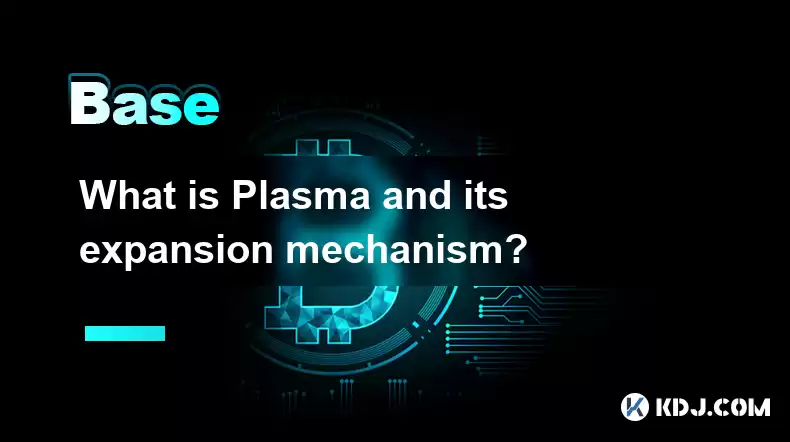-
 Bitcoin
Bitcoin $115100
1.27% -
 Ethereum
Ethereum $3675
2.71% -
 XRP
XRP $2.995
1.45% -
 Tether USDt
Tether USDt $1.000
0.02% -
 BNB
BNB $769.8
2.64% -
 Solana
Solana $168.0
3.25% -
 USDC
USDC $0.9999
-0.01% -
 TRON
TRON $0.3371
1.48% -
 Dogecoin
Dogecoin $0.2051
3.36% -
 Cardano
Cardano $0.7394
2.30% -
 Hyperliquid
Hyperliquid $38.15
0.42% -
 Stellar
Stellar $0.3966
-0.36% -
 Sui
Sui $3.486
2.93% -
 Chainlink
Chainlink $16.72
2.52% -
 Bitcoin Cash
Bitcoin Cash $568.0
4.36% -
 Hedera
Hedera $0.2440
2.59% -
 Ethena USDe
Ethena USDe $1.001
0.04% -
 Avalanche
Avalanche $22.16
2.06% -
 Litecoin
Litecoin $119.1
-0.73% -
 UNUS SED LEO
UNUS SED LEO $8.991
0.04% -
 Toncoin
Toncoin $3.232
-0.39% -
 Shiba Inu
Shiba Inu $0.00001233
2.82% -
 Uniswap
Uniswap $9.717
2.53% -
 Polkadot
Polkadot $3.664
1.85% -
 Dai
Dai $1.000
0.01% -
 Monero
Monero $281.2
-3.89% -
 Bitget Token
Bitget Token $4.350
1.55% -
 Cronos
Cronos $0.1428
5.07% -
 Pepe
Pepe $0.00001050
3.68% -
 Aave
Aave $262.3
3.54%
What is Plasma and its expansion mechanism?
Plasma scales Ethereum by processing transactions off-chain on child chains, anchored to the main blockchain, reducing costs and increasing efficiency.
Apr 07, 2025 at 04:00 pm

Plasma is a framework designed to scale Ethereum by creating off-chain transaction processing that can be periodically anchored back to the main Ethereum blockchain. This concept was initially proposed by Joseph Poon and Vitalik Buterin in a 2017 whitepaper titled "Plasma: Scalable Autonomous Smart Contracts." The primary goal of Plasma is to enable the processing of a large number of transactions at a lower cost and with greater efficiency than what is possible on the main Ethereum network.
What is Plasma?
Plasma is essentially a framework for creating scalable, off-chain solutions that can handle a high volume of transactions. It achieves this by creating a series of child chains, often referred to as "Plasma chains," which operate independently but are ultimately secured by the main Ethereum blockchain. These child chains can process transactions and smart contract executions without the need to interact with the main chain for every single transaction, thereby reducing congestion and costs.
How Does Plasma Work?
The operation of Plasma revolves around the concept of child chains. These chains are essentially smaller blockchains that run parallel to the main Ethereum blockchain. Each child chain has its own set of rules and can process transactions independently. However, to ensure security and finality, these child chains periodically submit a summary of their transactions, known as a commitment, to the main Ethereum blockchain.
Commitments are essentially snapshots of the state of the child chain at a particular point in time. By submitting these commitments to the main chain, Plasma ensures that the state of the child chain can be verified and, if necessary, disputed.
Fraud proofs are another critical component of Plasma. If a user believes that a transaction on a child chain is fraudulent, they can submit a fraud proof to the main Ethereum blockchain. The main chain then processes this proof and, if valid, reverts the state of the child chain to a previous, valid state.
Expansion Mechanism of Plasma
The expansion mechanism of Plasma involves the creation of multiple child chains, each capable of handling a subset of the total transaction volume. This allows for a modular and scalable approach to transaction processing.
Creating New Child Chains: New child chains can be created as needed to handle increasing transaction volumes. Each new chain can be tailored to specific use cases or communities, allowing for greater flexibility and efficiency.
Interoperability: Plasma chains can interact with each other and with the main Ethereum blockchain. This interoperability is facilitated through cross-chain transactions, which allow assets to move between different Plasma chains or back to the main chain.
Scalability: By distributing the transaction load across multiple child chains, Plasma can achieve significant scalability improvements. Each child chain can process transactions independently, reducing the burden on the main Ethereum network.
Benefits of Plasma
Plasma offers several key benefits that make it an attractive solution for scaling Ethereum:
Reduced Transaction Costs: By processing transactions off-chain, Plasma significantly reduces the cost of transactions compared to processing them directly on the main Ethereum blockchain.
Increased Transaction Throughput: Plasma chains can process transactions much faster than the main Ethereum network, leading to higher overall transaction throughput.
Enhanced Privacy: Since transactions are processed off-chain, Plasma can offer greater privacy for users compared to on-chain transactions.
Flexibility: The ability to create multiple child chains tailored to specific use cases allows for a high degree of flexibility in how transactions are processed and managed.
Challenges and Limitations of Plasma
While Plasma offers significant benefits, it also comes with its own set of challenges and limitations:
Complexity: The implementation of Plasma is complex, requiring sophisticated smart contracts and a deep understanding of blockchain technology.
Security Risks: The reliance on fraud proofs means that the security of Plasma chains is contingent on the ability of users to detect and report fraudulent transactions. This can be a challenging task, especially for less technically savvy users.
Data Availability: Plasma chains require that all transaction data be available to users who wish to verify the state of the chain. Ensuring this data availability can be a significant challenge, especially as the number of transactions grows.
Exit Games: In the event of a dispute or if a user wishes to move their assets back to the main Ethereum blockchain, they must participate in an exit game. These games can be time-consuming and complex, potentially deterring users from using Plasma chains.
Real-World Applications of Plasma
Plasma has been proposed for a variety of real-world applications, particularly in areas where high transaction volumes and low costs are critical:
Gaming: Plasma can be used to process in-game transactions and smart contract executions, allowing for seamless and cost-effective gameplay.
Payment Systems: By processing transactions off-chain, Plasma can enable fast and low-cost payment systems, making it suitable for microtransactions and other high-volume payment scenarios.
Supply Chain Management: Plasma can be used to track and manage supply chain transactions, ensuring transparency and efficiency in the movement of goods and assets.
Decentralized Finance (DeFi): Plasma can be used to scale DeFi applications, allowing for the processing of a large number of financial transactions without the high costs associated with the main Ethereum network.
Frequently Asked Questions
Q: Can Plasma be used with other blockchains besides Ethereum?
A: While Plasma was initially designed for Ethereum, the concept can theoretically be applied to other blockchains. However, the implementation would require significant modifications to the underlying blockchain architecture and smart contract system.
Q: How does Plasma compare to other scaling solutions like sharding and layer 2 solutions?
A: Plasma is one of several scaling solutions proposed for Ethereum. Sharding involves splitting the main Ethereum blockchain into smaller pieces, or shards, each capable of processing transactions independently. Layer 2 solutions, such as state channels and rollups, process transactions off-chain and then submit the results to the main chain. Plasma is unique in its use of child chains and fraud proofs, offering a different approach to scaling that can be complementary to other solutions.
Q: What are the main security concerns with Plasma?
A: The primary security concern with Plasma is the reliance on fraud proofs. If a fraudulent transaction goes undetected, it can lead to the loss of funds. Additionally, the complexity of exit games and the need for data availability can pose security risks if not properly managed.
Q: How can users ensure the security of their assets on Plasma chains?
A: Users can ensure the security of their assets on Plasma chains by regularly monitoring their transactions and participating in the fraud proof process if they detect any discrepancies. Additionally, choosing well-established and reputable Plasma chains can help mitigate security risks.
Disclaimer:info@kdj.com
The information provided is not trading advice. kdj.com does not assume any responsibility for any investments made based on the information provided in this article. Cryptocurrencies are highly volatile and it is highly recommended that you invest with caution after thorough research!
If you believe that the content used on this website infringes your copyright, please contact us immediately (info@kdj.com) and we will delete it promptly.
- Avalanche vs. Ruvi AI: Daily Sales Tell a Story of Crypto Disruption
- 2025-08-07 06:29:35
- DeSoc: The Crypto to Buy Now for a Decentralized Future (and Maybe 43x Gains!)
- 2025-08-07 06:50:16
- Arctic Pablo Coin: Riding the Meme Coin Wave with a Deflationary Twist
- 2025-08-07 07:18:13
- XRP Price Skyrocket? Decoding the Cryptocurrency's Next Move
- 2025-08-07 07:31:50
- Meme Coins in August 2025: Riding the Rally Wave
- 2025-08-07 06:56:08
- Big Whales, Altcoins, and Heavy Transactions: What's Moving the Crypto Market?
- 2025-08-07 06:29:35
Related knowledge

What is the difference between CeFi and DeFi?
Jul 22,2025 at 12:28am
Understanding CeFi and DeFiIn the world of cryptocurrency, CeFi (Centralized Finance) and DeFi (Decentralized Finance) represent two distinct financia...

How to qualify for potential crypto airdrops?
Jul 23,2025 at 06:49am
Understanding What Crypto Airdrops AreCrypto airdrops refer to the distribution of free tokens or coins to a large number of wallet addresses, often u...

What is a crypto "airdrop farmer"?
Jul 24,2025 at 10:22pm
Understanding the Role of a Crypto 'Airdrop Farmer'A crypto 'airdrop farmer' refers to an individual who actively participates in cryptocurrency airdr...

What is the difference between a sidechain and a Layer 2?
Jul 20,2025 at 11:35pm
Understanding the Concept of SidechainsA sidechain is a separate blockchain that runs parallel to the main blockchain, typically the mainnet of a cryp...

What is the Inter-Blockchain Communication Protocol (IBC)?
Jul 19,2025 at 10:43am
Understanding the Inter-Blockchain Communication Protocol (IBC)The Inter-Blockchain Communication Protocol (IBC) is a cross-chain communication protoc...

How does sharding improve scalability?
Jul 20,2025 at 01:21am
Understanding Sharding in BlockchainSharding is a database partitioning technique that is increasingly being adopted in blockchain technology to enhan...

What is the difference between CeFi and DeFi?
Jul 22,2025 at 12:28am
Understanding CeFi and DeFiIn the world of cryptocurrency, CeFi (Centralized Finance) and DeFi (Decentralized Finance) represent two distinct financia...

How to qualify for potential crypto airdrops?
Jul 23,2025 at 06:49am
Understanding What Crypto Airdrops AreCrypto airdrops refer to the distribution of free tokens or coins to a large number of wallet addresses, often u...

What is a crypto "airdrop farmer"?
Jul 24,2025 at 10:22pm
Understanding the Role of a Crypto 'Airdrop Farmer'A crypto 'airdrop farmer' refers to an individual who actively participates in cryptocurrency airdr...

What is the difference between a sidechain and a Layer 2?
Jul 20,2025 at 11:35pm
Understanding the Concept of SidechainsA sidechain is a separate blockchain that runs parallel to the main blockchain, typically the mainnet of a cryp...

What is the Inter-Blockchain Communication Protocol (IBC)?
Jul 19,2025 at 10:43am
Understanding the Inter-Blockchain Communication Protocol (IBC)The Inter-Blockchain Communication Protocol (IBC) is a cross-chain communication protoc...

How does sharding improve scalability?
Jul 20,2025 at 01:21am
Understanding Sharding in BlockchainSharding is a database partitioning technique that is increasingly being adopted in blockchain technology to enhan...
See all articles

























































































